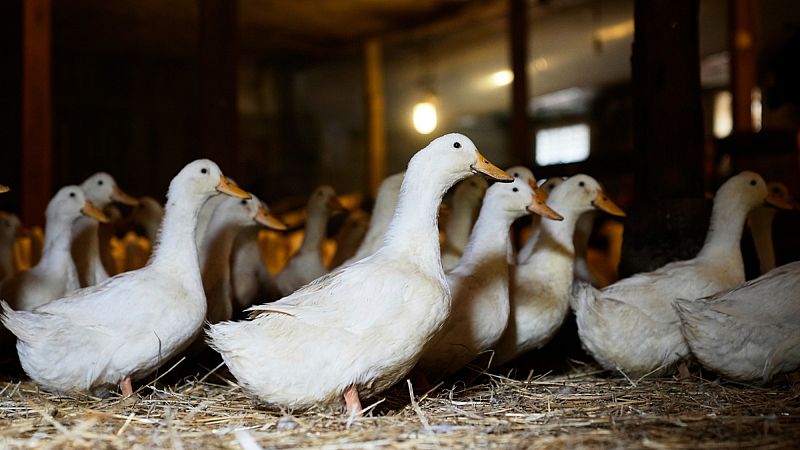
A strain of bird flu that has jumped from animals to people in the United States could find its way to Europe, EU scientists have warned in a new report.
EU-US trade of “raw milk” products and wild bird movement appear to be the biggest risks, according to the analysis from the European Food Safety Authority (EFSA).
Avian influenza has been spreading at higher levels worldwide over the past five years, including in wild birds and poultry farms in Europe. The virus has occasionally jumped from birds into mammals, including foxes, mink, and cats.
European officials are also concerned about an H5N1 bird flu outbreak among US dairy cows that spilled to people last year, infecting 70 and killing one.
There is no evidence of person-to-person transmission, and the US strain has not been detected in the EU. But health experts fear that left unchecked, the virus could evolve to the point where it spreads more easily between people, raising the risk of a broader outbreak.
“Avian influenza viruses pose an increasing threat, with the potential to adapt to humans and trigger future pandemics,” Andrea Gervelmeyer, a scientific officer with EFSA’s animal health team, told Euronews Health.
That, Gervelmeyer added, is a “major concern for global health”.
For the new report, EFSA analysed all the possible ways the US bird flu strain could make its way into the EU.
One risk is that as wild birds migrate in the coming months, they could bring H5N1 with them. The virus might be detected first in key European stopovers such as Iceland, the United Kingdom, Ireland, western parts of Scandinavia, and major wetlands on the coasts of Germany, Denmark, and the Netherlands.
EFSA scientists also scrutinised trade between the EU and US.
Imports of “raw” milk, cheese, or other dairy products pose a “potential risk for virus introduction into the EU,” they said.
Raw milk products may be properly labelled or pasteurised, a process that kills bacteria and viruses such as avian influenza. That means dairy exports from parts of the US hit hard by the outbreak could be riskier.
Since 2023, the EU has imported 889 tonnes of milk and cream and 10 tonnes of fresh cheese from the US that “may not have undergone sufficient thermal treatment” to kill the virus, EFSA said.
The EU also imports about 20,000 tonnes of beef from the US every year. But strict trade rules and limited presence of the virus in meat mean that while it is theoretically possible the bird flu strain could enter Europe that way, it’s not likely, EFSA said.
Scientists also do not believe that US exports of chicken, poultry, or bull semen – of which the EU has imported nearly 85,000 kilograms since 2023 – are likely to cause bird flu outbreaks in Europe.
However, there is still some “uncertainty” around data from the US, the agency said, and it will keep monitoring bird flu threats and issue recommendations to keep the US strain from entering the EU.
For now, Gervelmeyer said the risk assessment should help to boost “preparedness measures to protect public health in Europe”.







